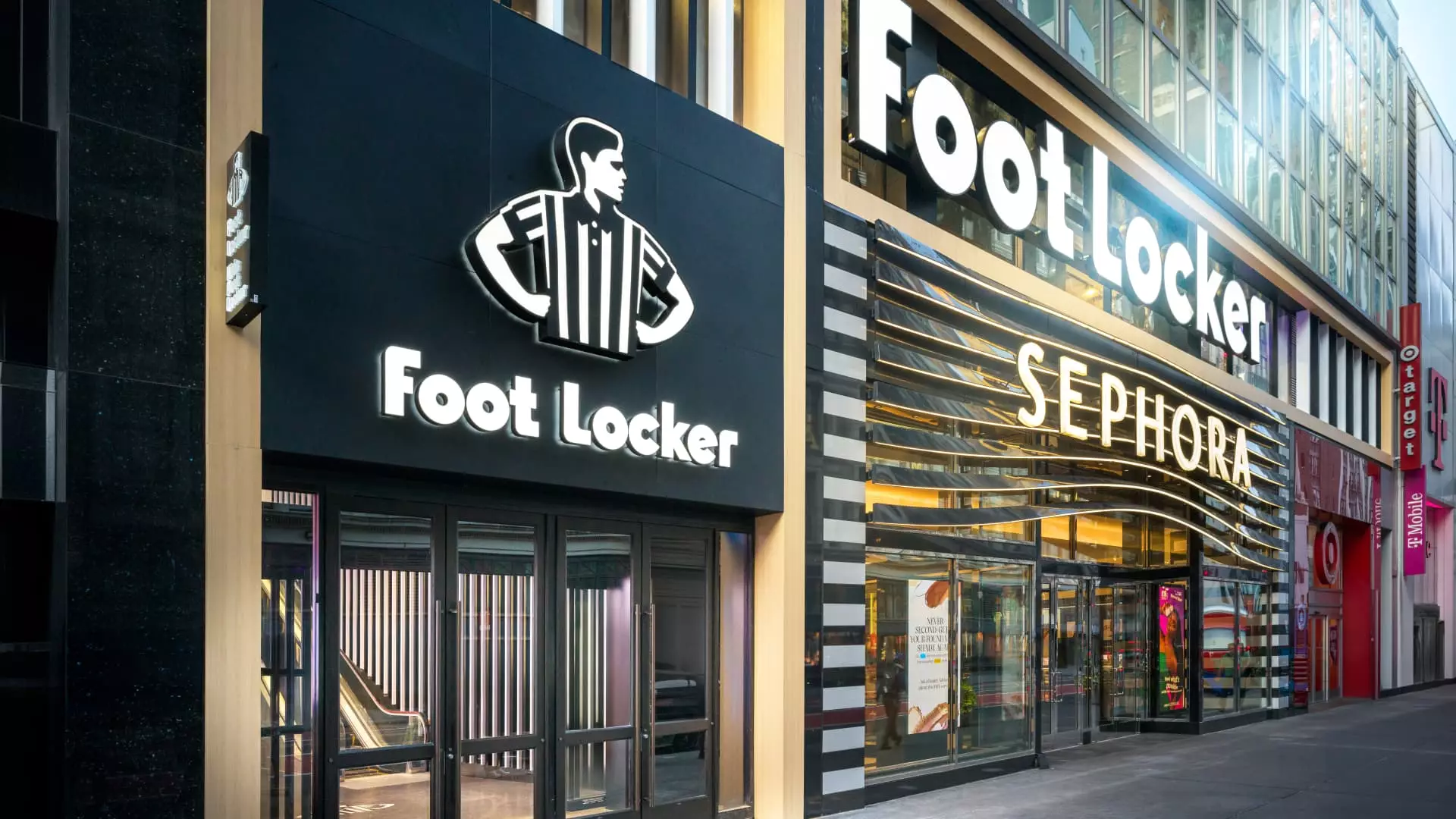Foot Locker, a prominent player in the athletic retail space, has made headlines recently, but not for the right reasons. Following a series of disappointing quarterly results, the company announced revised full-year guidance that indicates potential troubles ahead, not just for itself, but also for its largest brand partner, Nike. The revelations from Foot Locker’s latest earnings report serve as a warning that the sneaker market is facing headwinds driven by changing consumer behavior and an increasingly competitive landscape.
On Wednesday, Foot Locker reported a sharp decline in earnings, which sent shockwaves through investor circles. According to data from LSEG, the company recorded adjusted earnings per share of 33 cents while analysts had projected earnings of 41 cents. Furthermore, revenue of $1.96 billion missed expectations of $2.01 billion, leading the company to incur a significant loss of $33 million, or 34 cents per share—a stark contrast to the $28 million profit from the same period a year prior.
This disheartening performance highlights Foot Locker’s struggles in a market characterized by reduced consumer demand and an uptick in promotions. CEO Mary Dillon attributed these challenges, at least partly, to underperformance on the part of Nike. Dillon emphasized that while Foot Locker has managed to capture some market share with competing brands, Nike’s recent softness could have significant implications for Foot Locker’s bottom line given that nearly 60% of its sales are tied to its largest partner.
As Foot Locker attempts to navigate a tumultuous retail environment, elevated promotional strategies have emerged as a double-edged sword. Although promotions can attract customers, they can also lead to diminished margins and decreased profitability. Dillon noted that consumers are increasingly selective, showing up during critical shopping events such as back-to-school or major sales periods, but exhibiting caution outside these key moments. This behavior creates an unpredictable sales landscape with pronounced peaks and troughs.
Moreover, Nike’s recent business decisions appear to have contributed to Foot Locker’s struggles. The brand has been criticized for leaning too heavily on a limited range of sneaker styles, leading to a lack of innovation and excitement among consumers. With new leadership at Nike, under CEO Elliott Hill, stakeholders are keenly awaiting strategic shifts that could reinvigorate the brand’s appeal. Yet, until such strategies materialize, the ramifications for Foot Locker could be severe.
As a result of its disappointing performance, Foot Locker has revised its guidance for the remainder of the year, signaling a more cautious approach. The retailer now anticipates sales declines between 1.5% and 3.5% for the holiday quarter, a considerable downturn from previously projected growth. This updated forecast has prompted concern among analysts, particularly since it falls short of expectations of a modest decline of just 1.6%.
Foot Locker’s lowered projections don’t stop at sales figures. The company has adjusted its earnings outlook as well, anticipating earnings per share between $1.20 and $1.30, well below Wall Street’s expectations of $1.54. Such revisions reflect heightened concerns regarding consumer behavior and the effectiveness of current marketing strategies in an overcrowded marketplace.
Despite the bleak outlook, there are flickers of optimism within Foot Locker’s performance indicators. For instance, during the past quarter, the company managed to achieve a 2.4% decrease in comparable sales, albeit still below expectations of 3.2%. Additionally, segments like Champs and WSS experienced positive growth, suggesting that some areas are responding favorably to the ongoing turnaround strategy.
Dillon’s sentiment revolves around long-term strategies to address current challenges. Foot Locker’s management is focusing on refurbishing stores to enhance consumer experience, and the gross margin saw an uptick thanks to fewer promotional events compared to the previous year. In an environment rife with uncertainty, Dillon remains optimistic about the company’s plans and the established relationship with Nike’s new leadership.
Foot Locker’s recent quarterly results reflect a complex interplay of external market forces and internal brand strategies. As the company braces for a challenging holiday season, stakeholders and partners alike are left to ponder the implications of its performance—particularly regarding Nike’s pivotal role. While there are signs of recovery in specific areas of Foot Locker’s operations, the broader picture remains clouded by uncertainty. The landscape for athletic retail is changing, and Foot Locker must adapt swiftly if it hopes to maintain its footing amidst these tumultuous tides.

